DECEMBER 2019

EINSTEIN = Energy Intern Saucer Tech Energy IN put
Space, Time, and an Obsession of Einstein
1. Einstein, in his theory of special relativity, determined that the laws of physics are the same for all non-accelerating observers, and he showed that the speed of light within a vacuum is the same no matter the speed at which an observer travels.
2. As for backwards time travel, it is possible to find solutions in general relativity that allow for it, but the solutions require conditions that may not be physically possible.
3. A causal loop is a paradox of time travel that occurs when a future event is the cause of a past event, which in turn is the cause of the future event. Both events then exist in spacetime, but their origin cannot be determined.
4. speed of light. Sometimes c is used for the speed of waves in any material medium, and c0 for the speed of light in vacuum.
5. Space-time is a mathematical model that joins space and time into a single idea called a continuum. This four-dimensional continuum is known as Minkowski space. ... This is because the observed rate at which time passes depends on an object's velocity relative to the observer.
6. Time in physics is defined by its measurement: time is what a clock reads. In classical, non-relativistic physics it is a scalar quantity and, like length, mass, and charge, is usually described as a fundamental quantity.
7. space time is any mathematical model that fuses the three dimensions of space and the one dimension of time into a single four-dimensional continuum. Spacetime diagrams can be used to visualize relativistic effects such as why different observers perceive where and when events occur differently.
8. Time is a component quantity of various measurements used to sequence events, to compare the duration of events or the intervals between them, and to quantify rates of change of quantities in material reality or in the conscious experience. ... Time in physics is unambiguously operationally defined as "what a clock reads".
9. Space is the boundless three-dimensional extent in which objects and events have relative position and direction. Physical space is often conceived in three linear dimensions, although modern physicists usually consider it, with time, to be part of a boundless four-dimensional continuum known as space time.
10. A five-dimensional space is a space with five dimensions. If interpreted physically, that is one more than the usual three spatial dimensions and the fourth dimension of time used in relativistic physics. It is an abstraction which occurs frequently in mathematics, where it is a legitimate construct.
11. Time dilation explains why two working clocks will report different times after different accelerations. For example, at the ISS time goes slower, lagging 0.007 seconds behind for every six months. For GPS satellites to work, they must adjust for similar bending of spacetime to coordinate with systems on Earth.
12. The Universe is all of space and time and their contents, including planets, stars, galaxies, and all other forms of matter and energy.
13.Spatial dimensions
Classical physics theories describe three physical dimensions:
from a particular point in space, the basic directions in which we can
move are up/down, left/right, and forward/backward. Movement in any
other direction can be expressed in terms of just these three.
14. One notable feature of string theories is that these theories require extra dimensions of space time for their mathematical consistency. In bosonic string theory, spacetime is 26-dimensional, while in super string theory it is 10-dimensional, and in M-theory it is 11-dimensional.
15. theory of special relativity. It introduced a new framework for all of physics and proposed new concepts of space and time.
16. Einstein realized that massive objects caused a distortion in space-time. Imagine setting a large body in the center of a trampoline. The body would press down into the fabric, causing it to dimple. A marble rolled around the edge would spiral inward toward the body, pulled in much the same way that the gravity of a planet pulls at rocks in space.
17. relativity formula e=mc2
18. 
19. e- STAR C ( in my Book Before )
20. 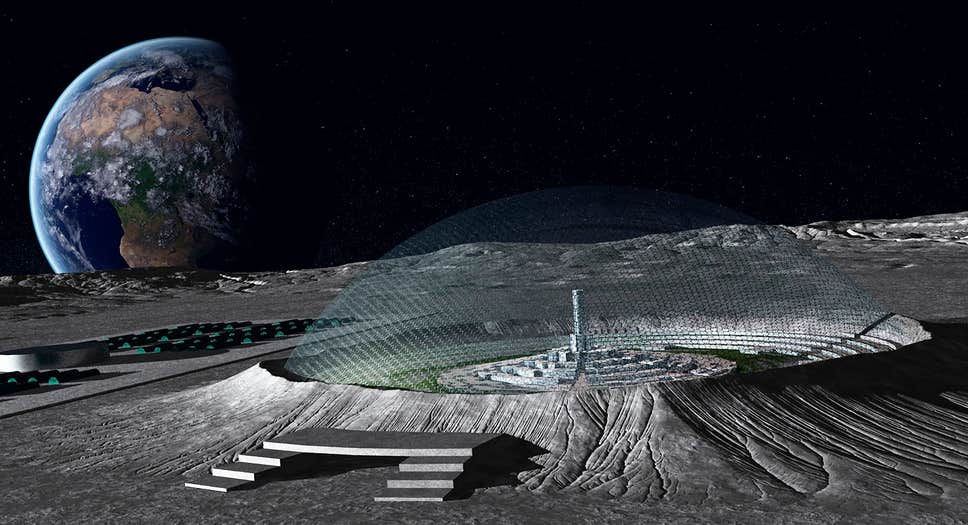
++++++++++++++++++++++++++++++++++++++++++++++++++++++++++++++++++++++
Starlight problem
The starlight problem states that if the universe was only 6,000 years old — as Biblical literalism and Young Earth Creationism (YEC) state — then there would not be sufficient time for distant starlight to reach Earth. We can see light from stars more (way more) than 6,000 light years away, therefore the universe cannot be a mere 6,000 years old.
The furthest objects visible, quasars, have been detected 13 billion light years away. After allowing for the metric expansion of space, this puts the lower limit of the age of the universe at near 13 billion years. The methods of measuring distances to the billions of light years are rather complicated, but there are direct measurements well beyond the limits of YEC, using only parallax. There are the measurements of the supernova SN1987A at about 168,000 light years, and the Gaia space mission should obtain many distances of objects up to about 30,000 light years.
Numerous attempts to solve this problem - including some hand-waving about whether such a problem even exists - have been attempted by creationists. Some are bizarre, some outright absurd, and none are taken seriously by the scientific community. However, they are all united by a desperate need to shoehorn an absurdly young age for the universe into a reality that says otherwise.
Galaxies over 12 billion light years away.
It is important to note that c-decay is in many ways, a class of "tired light" proposal such as those posited by Fritz Zwicky one of the most notable physicists of his era to explain redshift of galaxies.
White hole cosmology
White hole cosmology is a creationist cosmology invented by creationist Russell Humphreys and put forward in his 1994 book Starlight and Time. The main idea of white hole cosmology is that the world was created inside a black hole and that earth was subjected to intense time dilation so billions of years could have passed outside the field while only a few days would pass inside it.Omphalos hypothesis
The Omphalos hypothesis or argument provides an unscientific and unfalsifiable explanation for the starlight problem. The argument relies on the logically weak argument goddidit by claiming that the starlight we see is not natural but was in fact created in transit by God.Many creationists have rejected this explanation on theological grounds because it implies a deliberately deceitful God, much like the "dinosaur fossils are a test of my faith" arguments.
But if you accept the hypothesis, it opens a big can of worms. One could proceed to reject the 9,900 years of time given by dendrochronology by saying extra tree rings, over and above 4,004 BCE, were not natural but were in fact created in situ by God.
The
However, if this were the case, then scientists would still have to treat the universe as though it were ancient and so the actual date of creation is irrelevant. For some creationists, the possibility of God being deliberately deceptive is uncomfortable. (For example, did human-observed supernovae ever actually occur?) This solution also raises the problem of deciding when God created the apparently old universe — was it 6,000 years ago, or last Thursday? Moreover, many young-earth creationists also believe in the imminent destruction of the universe, which raises the question of whether stars farther away than 10,000 or so light-years ever actually existed to begin with.
Anisotropic synchrony convention
The problem with Lisle's proposal is that it results in a geocentric universe and would create observational differences which have not been seen, in addition to violating the endlessly validated physical principle of isotropy; that is, that the laws of physics behave the same way in all directions.
Anthropic principle
The anthropic principle is based on the observation that any small change in any of the basic constants of physics, which include the speed of light, would make human life impossible. However the fact that light travels at the speed of light is merely a side effect of something deeper at play. Light actually travels at the fastest speed possible, the speed of causality itself. This means that for a photon of light, all of eternity is a single instant. The moment it is created and the moment it is destroyed and all the intervening time is simply one clock tick for any massless particle including the photon. Therefore any "anthropic claims" are prima-facie invalid. The underpinnings of physics are derived from the quantized clock ticks and the rate at which the clock ticks for the universe of mass vs the universe of the massless has huge variability without upsetting the actual physics at play one iota. (Assumes Quantum Loop Gravity and Quantized Time)++++++++++++++++++++++++++++++++++++++++++++++++++++++++++++++++++++++++
The Power of the Sun
The sun is the closest star to Earth. Even at a distance of 150 million kilometers (93 million miles), its gravitational pull holds the planet in orbit. It radiates light and heat, or solar energy, which makes it possible for life to exist on Earth.
Plants
need sunlight to grow. Animals, including humans, need plants for food
and the oxygen they produce. Without heat from the sun, Earth would
freeze. There would be no winds, ocean currents, or clouds to transport water.
Solar
energy has existed as long as the sun—about 5 billion years. While
people have not been around that long, they have been using solar energy
in a variety of ways for thousands of years.
Solar energy is essential to agriculture—cultivating land, producing crops, and raising livestock. Developed about 10,000 years ago, agriculture had a key role in the rise of civilization. Solar techniques, such as crop rotation, increased harvests. Drying food using sun and wind prevented crops from spoiling. This surplus of food allowed for denser populations and structured societies.
Early civilizations around the world positioned buildings to face south to
gather heat and light. They used windows and skylights for the same
reason, as well as to allow for air circulation. These are elements of solar architecture. Other aspects include using selective shading and choosing building materials with thermal mass, meaning they store heat, such as stone and concrete. Today, computer programs make applications easier and more precise.
Solar power—the conversion of sunlight into electricity—is yet another application of solar technology. This can be done in a number of ways. The two most common are photovoltaic (solar cells) and concentrating solar power.
Solar cells convert
sunlight directly into electricity. The amount of power generated by
each cell is very low. Therefore, large numbers of cells must be grouped
together, like the panels mounted on the roof of a house, to generate
enough power.
The first solar cell was constructed in the 1880s. The earliest major application was on the American satellite Vanguard I, launched in 1958. A radio transmitter
powered by solar cells operated for about seven years; one using
conventional batteries lasted only 20 days. Since then, solar cells have
become the established power source for satellites, including those
used in the telecommunications industry.
On
Earth, solar cells are used for everything from calculators and watches
to homes, commercial buildings, and even stadiums. Kaohsiung World
Stadium in Taiwan, completed in 2009 to host the World Games, has more
than 8,800 solar panels on its roof. Charles Lin, director of Taiwan’s
Bureau of Public Works, said, “The stadium's solar energy panels will
make the venue self-sufficient in electricity needs.” When the stadium
is not in use, it can power 80 percent of the surrounding neighborhood.
Unlike
solar cells, which use sunlight to generate electricity, concentrating
solar power technology uses the sun’s heat. Lenses or mirrors focus
sunlight into a small beam that can be used to operate a boiler. That
produces steam to run turbines to generate electricity.
How far away could we travel from the Sun and still be able to see it?
Actually, this answer is more of an approximation. The Sun is by far the
sky's brightest night sky object because we are so close to it: between
91.5 - 94.5 million miles, depending on the time of year. All the other
stars are much fainter because they are so far away. (Think about it
this way: a light beam requires about 8.3 minutes to travel from the Sun
to Earth. A light beam from Proxima Centauri, the closest star to the
Sun, requires about 4.2 years to reach Earth. Proxima Centauri is about
262,000 times farther away from us than the Sun.)
If we were
to travel away from the Sun, it would become fainter. At Pluto's
distance, the Sun will still be many millions of times brighter than the
night sky's brightest star, Sirius. At the distance of Proxima
Centauri, the Sun would be about as bright as Procyon, the brightest
star in Canis Minor and the 8th brightest star in our sky. The faintest
stars that most people can see are about 185 times dimmer than Procyon.
For the Sun to appear this faint to us, we would have to be about 58
light years away from it. Some people have keener eyesight than most of
us and they can see fainter stars. However, if we were all in a space
vessel that was 58 light years from the solar system, we could still
just barely see the Sun. We'd likely need a highly detailed star chart
to locate it.
Sunlight travels at the speed of light. Photons emitted from the surface
of the Sun need to travel across the vacuum of space to reach our eyes.
The short answer is that it takes sunlight an average of 8 minutes and 20 seconds to travel from the Sun to the Earth.
If the Sun suddenly disappeared from the Universe (not that this could actually happen, don't panic), it would take a little more than 8 minutes before you realized it was time to put on a sweater.
We orbit the Sun at a distance of about 150 million km. Light moves at 300,000 kilometers/second. Divide these and you get 500 seconds, or 8 minutes and 20 seconds.
This is an average number. Remember, the Earth follows an elliptical orbit
around the Sun, ranging from 147 million to 152 million km. At its
closest point, sunlight only takes 490 seconds to reach Earth. And then
at the most distant point, it takes 507 seconds for sunlight to make the journey.But the story of light gets even more interesting, when you think about the journey light needs to make inside the Sun.

You probably know that photons are created by fusion reactions inside the Sun's core. They start off as gamma radiation and then are emitted and absorbed countless times in the Sun's radiative zone, wandering around inside the massive star before they finally reach the surface.
What you probably don't know, is that these photons striking your eyeballs were ACTUALLY created tens of thousands of years ago and it took that long for them to be emitted by the sun.
Once they escaped the surface, it was only a short 8 minutes for those photons to cross the vast distance from the Sun to the Earth
As you look outward into space, you're actually looking backwards in time.
The light you see from your computer is nanoseconds old. The light reflected from the surface of the Moon takes only a second to reach Earth. The Sun is more than 8 light-minutes away. And so, if the light from the nearest star (Alpha Centauri) takes more than 4 years to reach us, we're seeing that star 4 years in the past.
There are galaxies millions of light-years away, which means the light we're seeing left the surface of those stars millions of years ago. For example, the galaxy M109 is located about 83.5 million light-years away.
If aliens lived in those galaxies, and had strong enough telescopes, they would see the Earth as it looked in the past. They might even see dinosaurs walking on the surface.
++++++++++++++++++++++++++++++++++++++++++++++++++++++++++++++++++++++++
Laser rangefinder
A laser rangefinder is a rangefinder that uses a laser beam to determine the distance to an object. The most common form of laser rangefinder operates on the time of flight principle by sending a laser pulse in a narrow beam towards the object and measuring the time taken by the pulse to be reflected off the target and returned to the sender. Due to the high speed of light, this technique is not appropriate for high precision sub-millimeter measurements, where triangulation and other techniques are often used.
A long range laser rangefinder is capable of measuring distance up to 20 km; mounted on a tripod with an angular mount. The resulting system also provides azimuth and elevation measurements.
Pulse
The pulse may be coded to reduce the chance that the rangefinder can be jammed. It is possible to use Doppler effect techniques to judge whether the object is moving towards or away from the rangefinder, and if so, how fast.Precision
The precision of the instrument is determined by the rise or fall time of the laser pulse and the speed of the receiver. One that uses very sharp laser pulses and has a very fast detector can range an object to within a few millimeters.Range and range error
Despite the beam being narrow, it will eventually spread over long distances due to the divergence of the laser beam, as well as due to scintillation and beam wander effects, caused by the presence of air bubbles in the air acting as lenses ranging in size from microscopic to roughly half the height of the laser beam's path above the earth.These atmospheric distortions coupled with the divergence of the laser itself and with transverse winds that serve to push the atmospheric heat bubbles laterally may combine to make it difficult to get an accurate reading of the distance of an object, say, beneath some trees or behind bushes, or even over long distances of more than 1 km in open and unobscured desert terrain.
Some of the laser light might reflect off leaves or branches which are closer than the object, giving an early return and a reading which is too low. Alternatively, over distances longer than 1200 ft (365 m), the target, if in proximity to the earth, may simply vanish into a mirage, caused by temperature gradients in the air in proximity to the heated surface bending the laser light. All these effects have to be taken into account.
Calculation
The distance between point A and B is given byThen substituting the values in the equation,
Technologies
An OLS-27 IRST with laser rangefinder on the Sukhoi Su-27
Multiple frequency phase-shift - this measures the phase shift of multiple frequencies on reflection then solves some simultaneous equations to give a final measure.
Interferometry - the most accurate and most useful technique for measuring changes in distance rather than absolute distances.
Applications
Military
An American soldier with a GVS-5 laser rangefinder
Handheld military rangefinders operate at ranges of 2 km up to 25 km and are combined with binoculars or monoculars. When the rangefinder is equipped with a digital magnetic compass (DMC) and inclinometer it is capable of providing magnetic azimuth, inclination, and height (length) of targets. Some rangefinders can also measure a target's speed in relation to the observer. Some rangefinders have cable or wireless interfaces to enable them to transfer their measurement(s) data to other equipment like fire control computers. Some models also offer the possibility to use add-on night vision modules. Most handheld rangefinders use standard or rechargeable batteries.
A Dutch ISAF sniper team displaying their Accuracy International AWSM .338 Lapua Magnum rifle and VECTOR IV Leica/Vectronix laser rangefinder binoculars
To make laser rangefinders and laser-guided weapons less useful against military targets, various military arms may have developed laser-absorbing paint for their vehicles. Regardless, some objects don't reflect laser light very well and using a laser rangefinder on them is difficult.
3-D modeling
This LIDAR
scanner may be used to scan buildings, rock formations, etc., to
produce a 3D model. The LIDAR can aim its laser beam in a wide range:
its head rotates horizontally, a mirror flips vertically. The laser beam
is used to measure the distance to the first object on its path.
A number of algorithms have been developed to merge the range data retrieved from multiple angles of a single object to produce complete 3-D models with as little error as possible. One of the advantages that laser rangefinders offer over other methods of computer vision is that the computer does not need to correlate features from two images to determine depth information as in stereoscopic methods.
Laser rangefinders used in computer vision applications often have depth resolutions of tenths of millimeters or less. This can be achieved by using triangulation or refraction measurement techniques as opposed to the time of flight techniques used in LIDAR.
Forestry
Laser rangefinder TruPulse used for forest inventories (in combination with Field-Map technology)
Sports
Laser rangefinders may be effectively used in various sports that require precision distance measurement, such as golf, hunting, and archery. Some of the more popular manufacturers are Caddytalk, Opti-logic Corporation, Bushnell, Leupold, LaserTechnology, Trimble, Leica, Newcon Optik, Op. Electronics, Nikon, Swarovski Optik and Zeiss. Many rangefinders from Bushnell come with advanced features, such as ARC (angle range compensation), multi-distance ability, slope, JOLT (Vibrate when the target is locked), and Pin-Seeking. ARC can be calculated by hand using the rifleman's rule, but it's usually much easier if you let a rangefinder do it when you are out hunting. In golfing where time is most important, a laser rangefinder comes useful in locating distance to the flag. Many hunters in the eastern U.S. don't need a rangefinder, although many western hunters need them, due to longer shooting distances and more open spaces.Industrial production processes
An important application is the use of laser rangefinder technology during the automation of stock management systems and production processes in steel industry.Laser measuring tools
Laser rangefinder: Bosch GLM 50 C
Price
Laser rangefinders can vary in price, depending on the quality and application of the product. Military grade rangefinders need to be as accurate as possible and must also reach great distances. This could be in excess of hundreds of thousands of dollars. In other civilian applications, such as hunting or golf, they are more affordable and much more readily accessible.Safety
Laser rangefinders are divided into four classes and several subclasses. Laser rangefinders available to consumers are usually laser class 1 or class 2 devices and are considered relatively eye-safe. Regardless of the safety rating, direct eye contact should always be avoided. Most laser rangefinders for military use exceed the laser class 2 energy levels.+++++++++++++++++++++++++++++++++++++++++++++++++++++++++++++++++++++++
A Laser Distance Meter sends a pulse of laser light to the target and measures the time it takes for the reflection to return. For distances up to 30m, the accuracy is É3mm. On-board processing allows the device to add, subtract, calculate areas and volumes and to triangulate. You can measure distances at a distance.
So light from the laser is definitely scattered as the distance increases - but in clear air, there isn't much of an effect in terms of power reduction. However, if there is anything floating around in the air (water vapor, smoke, etc) -then the laser's power may be sharply reduced as a consequence.
Just for reference, a 5 mW laser is an eye hazard up to about 50 feet from the laser. For a pilot who is 1320 feet in the air, the laser light would be far too weak to cause any eye injury.
Most laser distance meters will have either 1/8-inch or 1/16-inch accuracy at 30 feet. For basic estimating, the 1/8-inch accuracy works just fine. ... Make the Call: Most applications for a laser distance measure will be fine with 1/8-inch accuracy. But more accurate is still more accurate
Have you ever played with a pocket-sized laser, wondering how far its
light would travel? Could you, a naughty student inside a classroom on
Earth, annoy a poor substitute teacher on Mars by waggling your laser
pointer at him?
By the time the light finally reached Mars, the glint would be a million times dimmer than the faintest light visible to the human eye.
But you don’t need to take our word for it. The math needed to calculate the answer is surprisingly simple.Partly inspired by a talk at a recent astronomy meeting that explored whether we could detect photons from potential exoplanet-dwelling aliens, Inside Science performed some of our own calculations to see if a hypothetical alien Galileo could observe photons coming from Earth.
All we need is an equation for calculating how quickly a laser beam spreads out as it travels through space. From that we can use straightforward geometry to derive the diameter of the beam when it hits its target. Finally, we divide the power output of the laser by the area of the final lit spot and voila! -- that's how intense the laser is at the destination. While the way humans, or aliens, perceive the brightness of this light is much less straightforward, for the purpose of this exercise we treat brightness and light intensity as the same thing.
Your pocket laser pointer
The power for an average laser pointer is a measly 0.005 watts. However, because of the narrow path of the laser beam, if you pointed it directly at your eye from an arm's length away, the little illuminated dot on your eyeball would be 30 times brighter than the midday sun. So, don't do this at home, or anywhere.Still, the narrow beam will spread out over long distances. Around 100 meters away from a red laser pointer, its beam is about 100 times wider and looks as bright as a 100-watt light bulb from 3 feet away. Viewed from an airplane 40,000 feet in the air -- assuming there’s no clouds or smog -- the pointer would be as bright as a quarter moon. From the International Space Station, it would fade to roughly as bright as the brightest star in the night sky -- Sirius.

For Starman, the dummy driving the Tesla car that Elon Musk's company Space X recently launched into space, your little red laser pointer would be too dim to notice. If you want to get his attention, you'll need something brighter.
The Navy's missile-killer
The U.S. Navy might have what we need. According to recent reports, their current goal is to develop a laser that is both logistically practical and powerful enough to destroy incoming cruise missiles. A laser like that would need to put out about 500,000 watts of power -- 100 million times more powerful than your pocket laser pointer. These lasers typically operate in the infrared spectrum, which is invisible to humans. But for the sake of this exercise we'll assume that both Starman and the Martians can see in the infrared.Weapons-grade lasers also tend to have a much larger opening, or aperture, which counterintuitively causes the laser beam to spread out less, thus enhancing the beam’s ability to maintain its intensity over longer distances.
Because of the larger aperture, if the missile-killer laser beam is aimed at the moon, the infrared spot it would make on the surface would only be about 1.5 miles across. For comparison, the incredibly dim red dot from your pocket laser pointer would be 8 miles wide once it reached the moon.
If you could see in the infrared and stood on the moon underneath the military laser’s beam, it would appear roughly 30 times brighter than the full Earth. That’s quite bright, but not blindingly so. It’s still only one-thousandth the brightness of the midday sun on Earth.
By the time the beam reached the Martians -- if we assume the shortest possible distance between Earth and the red planet, which is about 34 million miles -- the spotlight would be about 200 miles across. Its light should still be noticeable -- about half as bright as the brightest star in the sky sans the sun -- but not exactly attention grabbing.

The most powerful laser ever built
Several scientific facilities around the world have huge lasers that operate at more than a thousand trillion watts. In other words, these lasers have as much power as a million trillion pocket laser pointers -- that’s almost a billion laser pointers for every person on the planet!If run continuously, these lasers would use up the entire world's electricity supply in seconds. Luckily, the only reason these lasers can put out such intense power is that they concentrate the release over an extremely short period of time -- usually less than a trillionth of a second. The extremely short laser pulse is then focused down to a point a few thousandths of a millimeter across, and can be 10 trillion trillion times brighter than the surface of our sun. It's so powerful that scientists are using them to rip apart empty space itself in a quest to learn more about the fundamental laws of our universe.
What if we just want to use this for fun and shoot it at space invaders? One major drawback is that these lasers usually produce ultraviolet light, which is mostly absorbed by the Earth’s atmosphere. If we don’t want to turn our air into plasma, we’d have to construct our building-sized super laser cannon in space instead.

For the extremely brief time we could afford to fire the laser at Mars, it would cast UV light a thousand times more intense than the midday sun on Earth over an area 150 miles across. Let’s hope that the Martians have some SPF-1,000 sunblock handy.
Sadly, as we know by now, there are no little green men on Mars, or most likely anywhere else in our solar system. However, there are thousands of discovered exoplanets -- planets that orbit around stars outside our solar system -- many of which have the possibility to contain life. What if we try to get their attention?

Proxima Centauri, located roughly four light-years away, is the closest star to us and is orbited by several exoplanets. If we aimed our most powerful laser there, by the time the light reached it, it would appear brighter than the brightest star looks to us in a clear night sky. So, four years after we’ve fired our laser, if there's any alien astronomer looking at the right spot in their night sky, they may notice a nanosecond flash of ultraviolet light and go, "What was that?"
__________________________________________________________________________________
When lightning strikes are your LED designs safe?
The advent of light-emitting diode (LED) technology marked a significant revolution in the electrical lighting industry. Since 1990, when LED lamps were introduced, it is increasingly replacing legacy light sources such as, mercury vapour, metal halide, and sodium vapor in outdoor lighting applications. LED lighting technology is astonishing for its development in efficiency (higher lumens per watt), secondary optics (better lenses/reflectors), and greater thermal dissipation.
Growth in demand for LED lighting is accelerating as consumers and industrial users seek more energy-efficient illumination options. Expansion of LED lighting mechanism is also being driven by government actions designed to discourage continued usage of incandescent lamps. This system the high adoption rate of LED lighting is definitely a global phenomenon. Countries with the most advanced economies have well-established plans and programs to phase out legacy incandescent lighting. That shouldn’t be surprising because, the global lighting account is about 25% of the total energy consumption.
Though the initial cost of installing outdoor LED lighting can be substantial, this cost is justified and payback is established based on the lower wattage demand, lower maintenance cost, and longer lifetime it offers. In order to protect outdoor LED lighting from failing within an investment payback period of about five years, the lighting must offer high durability and reliability.
One significant threat to outdoor LED lighting is transient surge events in AC power lines that can damage lighting fixtures. An LED lamp contains power conversion electronics (AC/DC), driver IC for the LEDs, a heat sink for thermal management and optics to optimise light quality. An LED light directly connected to AC mains, for example, 120/220 V AC can be damaged by short circuit and overload conditions caused by component and/or circuit failures inside the bulb. In addition, lightning surges or load switching transients which originate outside the bulb can create voltage spikes or ring waves that can stress and ultimately damage components, and cause the bulb to collapse. Given that the value proposition for LED bulbs is not only lower energy usage, but longer lifetimes, it will be crucial that transient voltage protection is taken into account to eliminate field failures driven by the electrical environment.
Indirect lightning-induced surges
Over-voltage transient surges can occur in AC power lines as the result of a nearby electrical equipment being switched on/off. Nearby lightning strikes can also generate transient surges in AC power lines, especially in outdoor environments.

Fig. 1: Transient surge in AC power lines.
Approximately 70% of lightning occurs on land located in the tropics where the majority of thunderstorms occur. The African countries have the heaviest and persistent lightning attack from the beginning of time. The place where lightning occurs most often is near the small village of Kifuka in the mountains of eastern Democratic Republic of the Congo, where the elevation is around 975 m. On an average, this region receives 158 lightning strikes per 1 km2 a year. A large area around this place also is badly affected by the induced surge strikes which raise a chance to damage the outdoor LED lighting installations.
According to National Aeronautics and Space Administration’s (NASA) research on worldwide lightning strike frequency, Central and South America, Africa, Southern and Southeastern Asia have similar lightning strike frequency to the US, and thus we suggest equivalent surge immunity level to the US at 5 KA to 10 KA. For other regions with fewer lightning strikes like Europe, Eastern Asia, and Australia, lower surge immunity level could be considered at 3 KA to 5 KA.
This type of indirect lightning energy from storms can adversely affect outdoor LED lighting installations. The luminaire is susceptible to damage both in the differential and common modes:
- Differential mode: High voltage/current transient between the L-N or L-L terminals of the luminaire could damage components in the power supply unit or LED module board.
- Common mode: High voltage/current transient between the L-G (earth) or N-G (earth) of the luminaire could break over safety insulation in the power supply unit or LED module board, including the LED to heat-sink insulation.

Fig. 2: Combination wave open-circuit voltage.

Fig. 3: Combination wave short-circuit voltage.

Fig. 4: Worldwide lightning frequency (by NASA Global Hydrology Resource Centre).
Technologies to handle induced surge events
The way to protect outdoor LED lighting from induced surge strike is to block high voltage/current transient interference from entering the lighting. Surge protective device (SPD) is therefore utilised in outdoor LED lighting to suppress surge energy and minimise surge impact to the lighting.
There are several overvoltage protection components available for SPD, including components like metal oxide varistor (MOV), gas discharge tube (GDT), and transient voltage suppression (TVS) diode which are placed between AC power lines with normally high impedance and become low impedance when high voltage is detected. They divert surge energy back to AC power lines by its low impedance and turn back to high impedance after surge event. Among available technologies, MOV is preferred and widely implemented in SPD in power distribution panel for its high surge energy handling capability and fast response to transient voltage. Therefore MOV is the best suitable for surge protection device in outdoor LED lighting application.
Incorporating a robust surge suppression circuit in an outdoor luminaire can eliminate damage caused by surge energy, thereby enhancing reliability, minimising maintenance and enhancing the useful life of the lighting installation. A surge protection subassembly that can suppress excessive surges to lower voltage levels is an optimal way to protect the LED luminaire investment.

Fig. 5: LED street light protection scheme.
MOV technology is not only inexpensive but also a highly effective technology for suppressing transients in power supplies. It is also effective in many other applications, such as SPD modules that are often placed in front of an LED driver.
MOVs tend to degrade gradually after a large surge or multiple small surges. This degradation leads to increasing MOV leakage current, which in turn raises the MOV’s temperature, even under normal conditions like 120 VAC/240 V AC operating voltage. A thermal disconnect adjacent to the MOV can be used to sense the increase in MOV temperature while it continues to degrade to its end-of-life condition; at this point, the thermal disconnect will open the circuit, removing the degraded MOV from the circuit and preventing its catastrophic failure.

Fig. 6: Thermal disconnect prevents the failure of a degraded MOV.
MOVs are designed to clamp fast over-voltage transients within microseconds. However, in addition to short duration transients, MOVs inside SPD modules can be subjected to temporary over-voltage conditions caused by loss of neutral or by incorrect wiring during installation. These conditions can severely stress an MOV, causing it to go into a thermal runaway condition; in turn, this will result in overheating, smoke, and the potential for fire. UL 1449 and IEC 61643-11, the safety standards for SPDs, define specific abnormal conditions under which devices must be tested to ensure SPD safety. Robust designs include thermal disconnects within the SPD to protect the MOVs from thermal runaway.

Fig. 7: AC over current event.
End-of-life/replacement indication for SPDs
When MOV gets overheated due to temporary over-voltage or degradation end-of-life, thermal disconnect helps to cut MOV from AC circuit. The SPD therefore stops providing surge suppression function. Proper indication should be considered so that maintenance personnel know the SPD is not working and needs a replacement.
Luminaire designers can choose from two main types of SPD module configurations based on their maintenance and warranty strategies. Those are parallel- and series-connected surge protection subassemblies.
Parallel connection: The SPD module is connected in parallel with the load. An SPD module that has reached end-of-life is disconnected from the power source while leaving the AC/DC power supply unit energised. The lighting still remains operational, but the protection against the next surge to which the power supply unit and LED module are exposed is lost. In a parallel-connected SPD module, replacement indication can be added through the use of a small LED that indicates the SPD module status to the maintenance technician. Options for a green LED indicating an online SPD module or a red LED indicating an offline SPD module are available. Rather than an LED indication at each lighting fixture, the need for SPD module replacement could be indicated remotely to a light management center with SPD module end-of-life indication wires connected to a networked smart lighting system.
Series connection: The SPD module is connected in series with the load, where the end-of-life SPD module is disconnected from the power source, which turns the light off. The loss of power to the luminaire serves as indication for a maintenance call. The disconnected SPD module not only turns the lighting off to indicate the need for replacement but also isolates the AC/DC power supply unit from future surge strikes. General preference for this configuration is growing rapidly because the luminaire investment remains protected while the SPD module is awaiting replacement. It is far less expensive to replace a series-connected SPD module than the whole luminaire as in the case of a parallel-connected SPD module.

Fig. 8: Parallel and series connections.
Summary
The high energy savings offered by LED technology enhances the value of outdoor lighting. In order to help LED lighting fixtures reach their expected lifetime, a surge protection module should be added to outdoor LED lighting to prevent premature failure due to lightning surge events and other power line surges.
A surge protection module, installed along with the LED power supply unit, provides effective protection for lighting systems. However, it may be subject to temporary overvoltage threats and fatigue due to multiple surge events. Thermal disconnects placed in surge protection modules enhance the overall safety of the modules and help them to achieve UL 1449 and IEC 61643-11 certification.
When surge protection modules reach their end-of-life, a mechanism is needed to indicate that the modules require replacement. The series-connected SPD module provides the simplest way of indicating the need for replacement by disconnecting the light fixture from the power source, resulting in the light turning off. Parallel-connected SPD modules provide the option to interface with LEDs to indicate whether the modules are online or offline.
What’s The Upside to Incandescent Lights:
They’re really cheap to manufacture and accordingly, they’re really cheap to purchase (typically a dollar or two). Incandescent bulbs are widely available and adaptable to a large range of voltages, light outputs, and current (working well with both AC and DC power). They are the cheapest light on the market.Additionally, incandescent lights have a notoriously good ability to render color. The color rendering index (CRI) for an incandescent bulb with a color temperature of 2700K is 100 (a perfect score). As color temperature rises the CRI ratings drop off only slightly but typically remain above 95 (considered an excellent rating).
What are the Major Deficiencies in Incandescent Lights:
Amongst the deficiencies in incandescent lighting are the following:- Incandescent lights have the worst energy efficiency on the market. incandescent lamps have efficiency ratings around 10 lumens/watt. Unfortunately most of the energy they consume (~90%) goes into generating heat.
- Incandescent lights have the worst lifespan on the market. The average bulb lasts around 1,200 operating hours. This means that even though incandescent bulbs are cheap to purchase, you have to purchase a whole lot of them (5
LED:
What is a Light Emitting Diode (LED):
LED stands for Light Emitting Diode. A diode is an electrical device or component with two electrodes (an anode and a cathode) through which electricity flows - characteristically in only one direction (in through the anode and out through the cathode). Diodes are generally made from semiconductive materials such as silicon or selenium - solid state substances that conduct electricity in some circumstances and not in others (e.g. at certain voltages, current levels, or light intensities). When current passes through the semiconductor material the device emits visible light. It is very much the opposite of a photovoltaic cell (a device that converts visible light into electrical current).What’s The Major Upside to LED Lights:
There are four major advantages to LED lighting:- LEDs have an extremely long lifespan relative to every other lighting technology (including LPS and fluorescent lights but especially compared to incandescent lights). New LEDs can last 50,000 to 100,000 hours or more. The typical lifespan for an incandescent bulb, by comparison, is 1-5% as long at best (roughly 1,200 hours).
- LEDs are extremely energy efficient relative to every other commercially available lighting technology. There are several reasons for this to include the fact they waste very little energy in the form of infrared radiation (heat), and they emit light directionally (over 180 degrees versus 360 degrees which means there are far fewer losses from the need to redirect or reflect light).
- Very high light quality.
- Very low maintenance costs and hassle.
What Are Minor Upside to LED Lights:
In addition to the major advantages, LED lights also offer several smaller perks. These include the following:- Accessories: LEDs require far fewer accessory lamp parts.
- Color: LEDs can be designed to generate the entire spectrum of visible light colors without having to use the traditional color filters required by traditional lighting solutions.
- Directional: LEDs are naturally directional (they emit light for 180 degrees by default).
- Size: LEDs can be much smaller than other lights (even incandescent).
- Warm-Up: LEDs have faster switching (no warm-up or cool-down period).
What’s The Downside to LED Lights:
Considering the upside you might think that LED lights are a no-brainer. While this is increasingly becoming the case, there are still a few tradeoffs that need to be made when you choose LED:In particular, LED lights are relatively expensive. The up-front costs of an LED lighting project are typically greater than most of the alternatives. This is by far the biggest downside that needs to be considered. That said, the price of LEDs are rapidly decreasing and as they continue to be adopted en masse the price will continue to drop.
Where is LED Commonly Used:
The first practical use of LEDs was in circuit boards for computers. Since then they have gradually expanded their applications to include traffic lights, lighted signs, and more recently, indoor and outdoor lighting. LED lights are a wonderful solution for gymnasiums, warehouses, schools and commercial buildings. They are also adaptable for large public areas (which require powerful, efficient lights over a large area), road lighting (which offer significant color advantages over low and high pressure sodium lights), and parking lots.__________________________________________________________________________________
ROBOTS SPACE SHIPS TOMORROW
robots are used in space?Remotely operated vehicles (ROV) and remote manipulator system (RMS) are the two major types of space robots.
A typical ROV can be a rover moving over the terrain upon landing, a
lander operated from a stationary point and is in contact with an
extra-terrestrial plain or an unmanned spacecraft.
Types of robots The most conventional robot used in space missions is the rover. This vehicle can move around the surface of another planet transporting scientific instruments. Usually both the vehicle and the instruments are operated autonomously
Rovers usually arrive at the planetary surface on a lander-style spacecraft. Rovers are created to land on another planet, besides Earth, to find out information and to take samples. They can collect dust, rocks, and even take pictures. They are very useful for exploring the universe.
Robotics deals with the design, construction, operation, and use of robots, as well as computer systems for their control, sensory feedback, and information processing. These technologies are used to develop machines that can substitute for humans and replicate human actions.
NASA (National Aeronautics and Space Administration) robots are robotic devices used to aid, augment, or substitute for astronauts in order to do difficult or rote tasks such as repairs in dangerous environments (such as those with radiation or micrometeorite risks), routine procedures (video capture), etc.
Robotic spacecraft
Many artificial satellites are robotic spacecraft, as are many landers and rovers.
Design
In spacecraft design, the United States Air Force considers a vehicle to consist of the mission payload and the bus (or platform). The bus provides physical structure, thermal control, electrical power, attitude control and telemetry, tracking and commanding.
JPL divides the "flight system" of a spacecraft into subsystems. These include:
Structure
An illustration's of NASA's planned Orion spacecraft approaching a robotic asteroid capture vehicle
- provides overall mechanical integrity of the spacecraft
- ensures spacecraft components are supported and can withstand launch loads
Data handling
This is sometimes referred to as the command and data subsystem. It is often responsible for:- command sequence storage
- maintaining the spacecraft clock
- collecting and reporting spacecraft telemetry data (e.g. spacecraft health)
- collecting and reporting mission data (e.g. photographic images)
Attitude determination and control
This system is mainly responsible for the correct spacecraft's orientation in space (attitude) despite external disturbance-gravity gradient effects, magnetic-field torques, solar radiation and aerodynamic drag; in addition it may be required to reposition movable parts, such as antennas and solar arrays.
In planetary exploration missions involving robotic spacecraft, there
are three key parts in the processes of landing on the surface of the
planet to ensure a safe and successful landing.
This process includes an entry into the planetary gravity field and
atmosphere, a descent through that atmosphere towards an
intended/targeted region of scientific value, and a safe landing that
guarantees the integrity of the instrumentation on the craft is
preserved. While the robotic spacecraft is going through those parts, it
must also be capable of estimating its position compared to the surface
in order to ensure reliable control of itself and its ability to
maneuver well. The robotic spacecraft must also efficiently perform
hazard assessment and trajectory adjustments in real time to avoid
hazards. To achieve this, the robotic spacecraft requires accurate
knowledge of where the spacecraft is located relative to the surface
(localization), what may pose as hazards from the terrain (hazard
assessment), and where the spacecraft should presently be headed (hazard
avoidance). Without the capability for operations for localization,
hazard assessment, and avoidance, the robotic spacecraft becomes unsafe
and can easily enter dangerous situations such as surface collisions,
undesirable fuel consumption levels, and/or unsafe maneuvers.
Telecommunications
Components in the telecommunications subsystem include radio antennas, transmitters and receivers. These may be used to communicate with ground stations on Earth, or with other spacecraft.Electrical power
The supply of electric power on spacecraft generally come from photovoltaic (solar) cells or from a radioisotope thermoelectric generator. Other components of the subsystem include batteries for storing power and distribution circuitry that connects components to the power sources.Temperature control and protection from the environment
Spacecraft are often protected from temperature fluctuations with insulation. Some spacecraft use mirrors and sunshades for additional protection from solar heating. They also often need shielding from micrometeoroids and orbital debris
Spacecraft propulsion is a method that allows a spacecraft to travel through space by generating thrust to push it forward.
However, there is not one universally used propulsion system:
monopropellant, bipropellant, ion propulsion, etc. Each propulsion
system generates thrust in slightly different ways with each system
having its own advantages and disadvantages. But, most spacecraft
propulsion today is based on rocket
engines. The general idea behind rocket engines is that when an
oxidizer meets the fuel source, there is explosive release of energy and
heat at high speeds, which propels the spacecraft forward. This happens
due to one basic principle known as Newton's Third Law.
According to Newton, "to every action there is an equal and opposite
reaction." As the energy and heat is being released from the back of the
spacecraft, gas particles are being pushed around to allow the
spacecraft to propel forward. The main reason behind the usage of rocket
engine today is because rockets are the most powerful form of
propulsion there is.
Monopropellant
For a propulsion system to work, there is usually an oxidizer
line and a fuel line. This way, the spacecraft propulsion is
controlled. But in a monopropellant propulsion, there is no need for an
oxidizer line and only requires the fuel line.
This works due to the oxidizer being chemically bonded into the fuel
molecule itself. But for the propulsion system to be controlled, the
combustion of the fuel can only occur due to a presence of a catalyst.
This is quite advantageous due to making the rocket engine lighter and
cheaper, easy to control, and more reliable. But, the downfall is that
the chemical is very dangerous to manufacture, store, and transport.
Bipropellant
A bipropellant propulsion system is a rocket engine that uses a liquid propellent. This means both the oxidizer and fuel line are in liquid states. This system is unique because it requires no ignition system, the two liquids would spontaneously combust as soon as they come into contact with each other and produces the propulsion to push the ship forward. The main benefit for having this technology is because that these kinds of liquids have relatively high density, which allows the volume of the propellent tank to be small, therefore increasing space efficacy. The downside is the same as that of monopropellant propulsion system: very dangerous to manufacture, store, and transport.
Ion
Mechanical devices
Mechanical components often need to be moved for deployment after launch or prior to landing. In addition to the use of motors, many one-time movements are controlled by pyrotechnic devices.Robotic vs. uncrewed spacecraft
Robotic spacecraft are specifically designed system for a specific hostile environment. Due to their specification for a particular environment, it varies greatly in complexity and capabilities. While an uncrewed spacecraft is a spacecraft without personnel or crew and is operated by automatic (proceeds with an action without human intervention) or remote control (with human intervention). The term 'uncrewed spacecraft' does not imply that the spacecraft is robotic.Control
Robotic spacecraft use telemetry to radio back to Earth acquired data and vehicle status information. Although generally referred to as "remotely controlled" or "telerobotic", the earliest orbital spacecraft – such as Sputnik 1 and Explorer 1 – did not receive control signals from Earth. Soon after these first spacecraft, command systems were developed to allow remote control from the ground. Increased autonomy is important for distant probes where the light travel time prevents rapid decision and control from Earth. Newer probes such as Cassini–Huygens and the Mars Exploration Rovers are highly autonomous and use on-board computers to operate independently for extended periods of time.Space probes
A space probe is a robotic spacecraft that does not orbit Earth, but instead, explores further into outer space. A space probe may approach the Moon; travel through interplanetary space; flyby, orbit, or land on other planetary bodies; or enter interstellar space.SpaceX’s Dragon
An example of a fully robotic spacecraft in the modern world would be SpaceX's Dragon.The SpaceX Dragon is a robotic spacecraft designed to send not only cargo to low Earth orbit, but also humans as well. The SpaceX Dragon's total height is 7.2 m (23.6 ft) with a diameter of 3.7 m (12 ft). The maximum launch payload mass is 6,000 kg (13,228 lbs) with a maximum return mass of 3,000 kg (6,614 lbs), along with a maximum launch payload volume of 25m^3 (883 ft^3) and a maximum return payload volume of 11m^3 (388 ft^3). The maximum endurance of the Dragon in space is two years.In 2012 the SpaceX Dragon made history by becoming the first commercial robotic spacecraft to deliver cargo to the International Space Station and to safely return cargo to Earth in the same trip, something previously achieved only by governments. Currently the Dragon is meant to transfer cargo because of its capability of returning significant amounts of cargo to Earth despite it originally being designed to carry humans.
Departure shot of Pluto by New Horizons, showing Pluto's atmosphere backlit by the Sun.
Robotic spacecraft service vehicles
AERCam Sprint released from the Space Shuttle Columbia payload bay
- MDA Space Infrastructure Servicing vehicle — an in-space refueling depot and service spacecraft for communication satellites in geosynchronous orbit. Launch planned for 2015.
- Mission Extension Vehicle is an alternative approach that does not utilize in-space RCS fuel transfer. Rather, it would connect to the target satellite in the same way as MDA SIS, and then use "its own thrusters to supply attitude control for the target."
Interstellar travel
Interstellar travel is crewed or uncrewed travel between stars or planetary systems. Interstellar travel will be much more difficult than interplanetary spaceflight; the distances between the planets in the Solar System are less than 30 astronomical units (AU)—whereas the distances between stars are typically hundreds of thousands of AU, and usually expressed in light-years. Because of the vastness of those distances, interstellar travel would require a high percentage of the speed of light; huge travel time, lasting from decades to millennia or longer.
The speeds required for interstellar travel in a human lifetime far exceed what current methods of spacecraft propulsion can provide. Even with a hypothetically perfectly efficient propulsion system, the kinetic energy corresponding to those speeds is enormous by today's standards of energy development. Moreover, collisions by the spacecraft with cosmic dust and gas can produce very dangerous effects both to passengers and the spacecraft itself.
A number of strategies have been proposed to deal with these problems, ranging from giant arks that would carry entire societies and ecosystems, to microscopic space probes. Many different spacecraft propulsion systems have been proposed to give spacecraft the required speeds, including nuclear propulsion, beam-powered propulsion, and methods based on speculative physics.
For both crewed and uncrewed interstellar travel, considerable technological and economic challenges need to be met. Even the most optimistic views about interstellar travel see it as only being feasible decades from now. However, in spite of the challenges, if or when interstellar travel is realised, a wide range of scientific benefits is expected.
Most interstellar travel concepts require a developed space logistics system capable of moving millions of tons to a construction / operating location, and most would require gigawatt-scale power for construction or power (such as Star Wisp or Light Sail type concepts). Such a system could grow organically if space-based solar power became a significant component of Earth's energy mix. Consumer demand for a multi-terawatt system would automatically create the necessary multi-million ton/year logistical system
Challenges
Interstellar distances
Distances between the planets in the Solar System are often measured in astronomical units (AU), defined as the average distance between the Sun and Earth, some 1.5×108 kilometers (93 million miles). Venus, the closest other planet to Earth is (at closest approach) 0.28 AU away. Neptune, the farthest planet from the Sun, is 29.8 AU away. As of October 30, 2019, Voyager 1, the farthest human-made object from Earth, is 147.9 AU away.The closest known star, Proxima Centauri, is approximately 268,332 AU away, or over 9,000 times farther away than Neptune.
| Object | A.U. | light time |
|---|---|---|
| Moon | 0.0026 | 1.3 seconds |
| Sun | 1 | 8 minutes |
| Venus (nearest planet) | 0.28 | 2.41 minutes |
| Neptune (farthest planet) | 29.8 | 4.1 hours |
| Voyager 1 | 147.9 | 20:30 hours |
| Proxima Centauri (nearest star and exoplanet) | 268,332 | 4.24 years |
Another way of understanding the vastness of interstellar distances is by scaling: One of the closest stars to the Sun, Alpha Centauri A (a Sun-like star), can be pictured by scaling down the Earth–Sun distance to one meter (3.28 ft). On this scale, the distance to Alpha Centauri A would be 276 kilometers (171 miles).
The fastest outward-bound spacecraft yet sent, Voyager 1, has covered 1/600 of a light-year in 30 years and is currently moving at 1/18,000 the speed of light. At this rate, a journey to Proxima Centauri would take 80,000 years.
Required energy
A significant factor contributing to the difficulty is the energy that must be supplied to obtain a reasonable travel time. A lower bound for the required energy is the kinetic energy where is the final mass. If deceleration on arrival is desired and cannot be achieved by any means other than the engines of the ship, then the lower bound for the required energy is doubled to .The velocity for a manned round trip of a few decades to even the nearest star is several thousand times greater than those of present space vehicles. This means that due to the term in the kinetic energy formula, millions of times as much energy is required. Accelerating one ton to one-tenth of the speed of light requires at least 450 petajoules or 4.50×1017 joules or 125 terawatt-hours (world energy consumption 2008 was 143,851 terawatt-hours), without factoring in efficiency of the propulsion mechanism. This energy has to be generated onboard from stored fuel, harvested from the interstellar medium, or projected over immense distances.
Interstellar medium
A knowledge of the properties of the interstellar gas and dust through which the vehicle must pass is essential for the design of any interstellar space mission. A major issue with traveling at extremely high speeds is that interstellar dust may cause considerable damage to the craft, due to the high relative speeds and large kinetic energies involved. Various shielding methods to mitigate this problem have been proposed. Larger objects (such as macroscopic dust grains) are far less common, but would be much more destructive. The risks of impacting such objects, and methods of mitigating these risks, have been discussed in literature, but many unknowns remain and, owing to the inhomogeneous distribution of interstellar matter around the Sun, will depend on direction travelled. Although a high density interstellar medium may cause difficulties for many interstellar travel concepts, interstellar ramjets, and some proposed concepts for decelerating interstellar spacecraft, would actually benefit from a denser interstellar medium.Hazards
The crew of an interstellar ship would face several significant hazards, including the psychological effects of long-term isolation, the effects of exposure to ionizing radiation, and the physiological effects of weightlessness to the muscles, joints, bones, immune system, and eyes. There also exists the risk of impact by micrometeoroids and other space debris. These risks represent challenges that have yet to be overcome.Wait calculation
It has been argued that an interstellar mission that cannot be completed within 50 years should not be started at all. Instead, assuming that a civilization is still on an increasing curve of propulsion system velocity and not yet having reached the limit, the resources should be invested in designing a better propulsion system. This is because a slow spacecraft would probably be passed by another mission sent later with more advanced propulsion (the incessant obsolescence postulate)On the other hand, Andrew Kennedy has shown that if one calculates the journey time to a given destination as the rate of travel speed derived from growth (even exponential growth) increases, there is a clear minimum in the total time to that destination from now. Voyages undertaken before the minimum will be overtaken by those that leave at the minimum, whereas voyages that leave after the minimum will never overtake those that left at the minimum.
Prime targets for interstellar travel
There are 59 known stellar systems within 40 light years of the Sun, containing 81 visible stars. The following could be considered prime targets for interstellar missions:| System | Distance (ly) | Remarks |
|---|---|---|
| Alpha Centauri | 4.3 | Closest system. Three stars (G2, K1, M5). Component A is similar to the Sun (a G2 star). On August 24, 2016, the discovery of an Earth-size exoplanet (Proxima Centauri b) orbiting in the habitable zone of Proxima Centauri was announced. |
| Barnard's Star | 6 | Small, low-luminosity M5 red dwarf. Second closest to Solar System. |
| Sirius | 8.7 | Large, very bright A1 star with a white dwarf companion. |
| Epsilon Eridani | 10.8 | Single K2 star slightly smaller and colder than the Sun. It has two asteroid belts, might have a giant and one much smaller planet, and may possess a Solar-System-type planetary system. |
| Tau Ceti | 11.8 | Single G8 star similar to the Sun. High probability of possessing a Solar-System-type planetary system: current evidence shows 5 planets with potentially two in the habitable zone. |
| Wolf 1061 | ~14 | Wolf 1061 c is 4.3 times the size of Earth; it may have rocky terrain. It also sits within the ‘Goldilocks’ zone where it might be possible for liquid water to exist. |
| Gliese 581 planetary system | 20.3 | Multiple planet system. The unconfirmed exoplanet Gliese 581g and the confirmed exoplanet Gliese 581d are in the star's habitable zone. |
| Gliese 667C | 22 | A system with at least six planets. A record-breaking three of these planets are super-Earths lying in the zone around the star where liquid water could exist, making them possible candidates for the presence of life. |
| Vega | 25 | A very young system possibly in the process of planetary formation. |
| TRAPPIST-1 | 39 | A recently discovered system which boasts 7 Earth-like planets, some of which may have liquid water. The discovery is a major advancement in finding a habitable planet and in finding a planet that could support life. |
Proposed methods
Slow, uncrewed probes
Slow interstellar missions based on current and near-future propulsion technologies are associated with trip times starting from about one hundred years to thousands of years. These missions consist of sending a robotic probe to a nearby star for exploration, similar to interplanetary probes such as used in the Voyager program. By taking along no crew, the cost and complexity of the mission is significantly reduced although technology lifetime is still a significant issue next to obtaining a reasonable speed of travel. Proposed concepts include Project Daedalus, Project Icarus, Project Dragonfly, Project Longshot, and more recently Breakthrough Starshot.Fast, uncrewed probes
Nanoprobes
Near-lightspeed nano spacecraft might be possible within the near future built on existing microchip technology with a newly developed nanoscale thruster. Researchers at the University of Michigan are developing thrusters that use nanoparticles as propellant. Their technology is called "nanoparticle field extraction thruster", or nanoFET. These devices act like small particle accelerators shooting conductive nanoparticles out into space.Michio Kaku, a theoretical physicist, has suggested that clouds of "smart dust" be sent to the stars, which may become possible with advances in nanotechnology. Kaku also notes that a large number of nanoprobes would need to be sent due to the vulnerability of very small probes to be easily deflected by magnetic fields, micrometeorites and other dangers to ensure the chances that at least one nanoprobe will survive the journey and reach the destination.
Given the light weight of these probes, it would take much less energy to accelerate them. With onboard solar cells, they could continually accelerate using solar power. One can envision a day when a fleet of millions or even billions of these particles swarm to distant stars at nearly the speed of light and relay signals back to Earth through a vast interstellar communication network.
As a near-term solution, small, laser-propelled interstellar probes, based on current CubeSat technology were proposed in the context of Project Dragonfly.
Slow, crewed missions
In crewed missions, the duration of a slow interstellar journey presents a major obstacle and existing concepts deal with this problem in different ways. They can be distinguished by the "state" in which humans are transported on-board of the spacecraft.Generation ships
A generation ship (or world ship) is a type of interstellar ark in which the crew that arrives at the destination is descended from those who started the journey. Generation ships are not currently feasible because of the difficulty of constructing a ship of the enormous required scale and the great biological and sociological problems that life aboard such a ship raises .Suspended animation
Scientists and writers have postulated various techniques for suspended animation. These include human hibernation and cryonic preservation. Although neither is currently practical, they offer the possibility of sleeper ships in which the passengers lie inert for the long duration of the voyage.Frozen embryos
A robotic interstellar mission carrying some number of frozen early stage human embryos is another theoretical possibility. This method of space colonization requires, among other things, the development of an artificial uterus, the prior detection of a habitable terrestrial planet, and advances in the field of fully autonomous mobile robots and educational robots that would replace human parents.Island hopping through interstellar space
Interstellar space is not completely empty; it contains trillions of icy bodies ranging from small asteroids (Oort cloud) to possible rogue planets. There may be ways to take advantage of these resources for a good part of an interstellar trip, slowly hopping from body to body or setting up waystations along the way.Fast missions
If a spaceship could average 10 percent of light speed (and decelerate at the destination, for manned missions), this would be enough to reach Proxima Centauri in forty years. Several propulsion concepts have been proposed that might be eventually developed to accomplish this , but none of them are ready for near-term (few decades) developments at acceptable cost.Time dilation
Physicists generally believe faster-than-light travel is impossible. Relativistic time dilation allows a traveler to experience time more slowly, the closer their speed is to the speed of light. This apparent slowing becomes noticeable when velocities above 80% of the speed of light are attained. Clocks aboard an interstellar ship would run slower than Earth clocks, so if a ship's engines were capable of continuously generating around 1 g of acceleration (which is comfortable for humans), the ship could reach almost anywhere in the galaxy and return to Earth within 40 years ship-time (see diagram). Upon return, there would be a difference between the time elapsed on the astronaut's ship and the time elapsed on Earth.For example, a spaceship could travel to a star 32 light-years away, initially accelerating at a constant 1.03g (i.e. 10.1 m/s2) for 1.32 years (ship time), then stopping its engines and coasting for the next 17.3 years (ship time) at a constant speed, then decelerating again for 1.32 ship-years, and coming to a stop at the destination. After a short visit, the astronaut could return to Earth the same way. After the full round-trip, the clocks on board the ship show that 40 years have passed, but according to those on Earth, the ship comes back 76 years after launch.
From the viewpoint of the astronaut, onboard clocks seem to be running normally. The star ahead seems to be approaching at a speed of 0.87 light years per ship-year. The universe would appear contracted along the direction of travel to half the size it had when the ship was at rest; the distance between that star and the Sun would seem to be 16 light years as measured by the astronaut.
At higher speeds, the time on board will run even slower, so the astronaut could travel to the center of the Milky Way (30,000 light years from Earth) and back in 40 years ship-time. But the speed according to Earth clocks will always be less than 1 light year per Earth year, so, when back home, the astronaut will find that more than 60 thousand years will have passed on Earth.
Constant acceleration
This plot shows a ship capable of 1-g (10 m/s2 or about 1.0 ly/y2) "felt" or proper-acceleration can go far, except for the problem of accelerating on-board propellant.
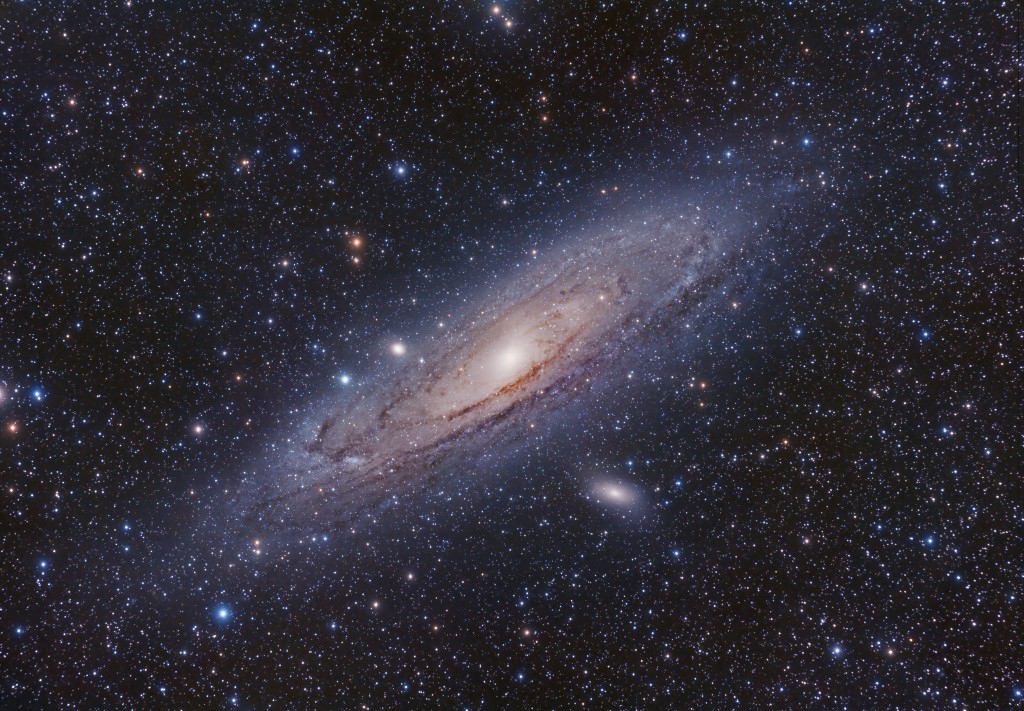

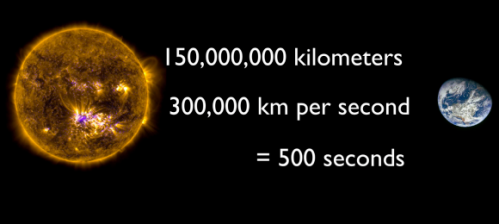
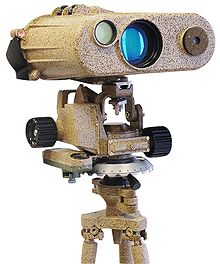






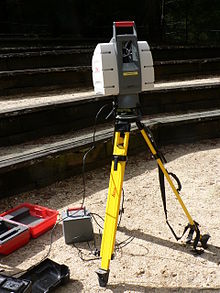

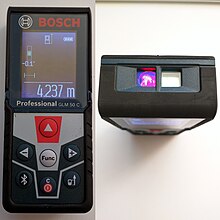
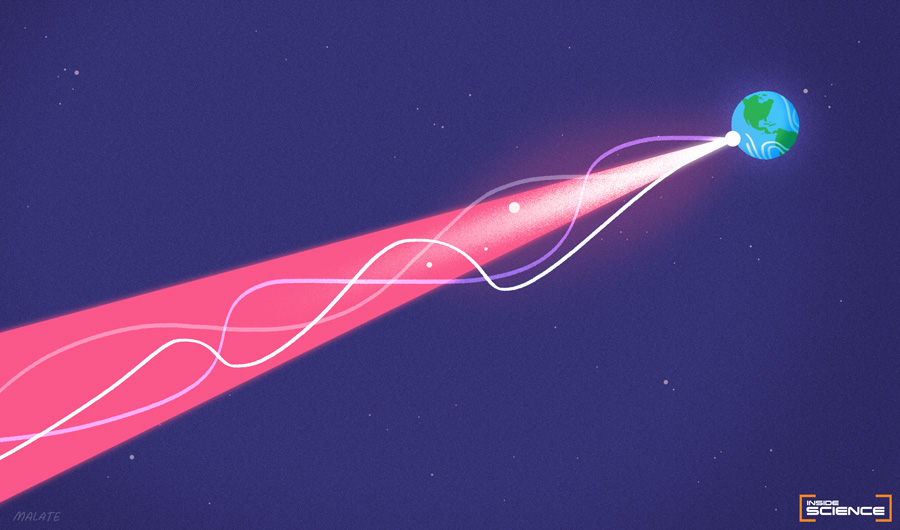

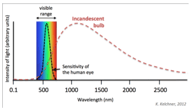


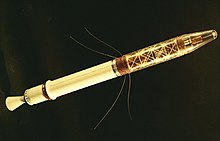



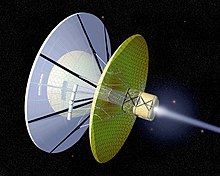






Tidak ada komentar:
Posting Komentar